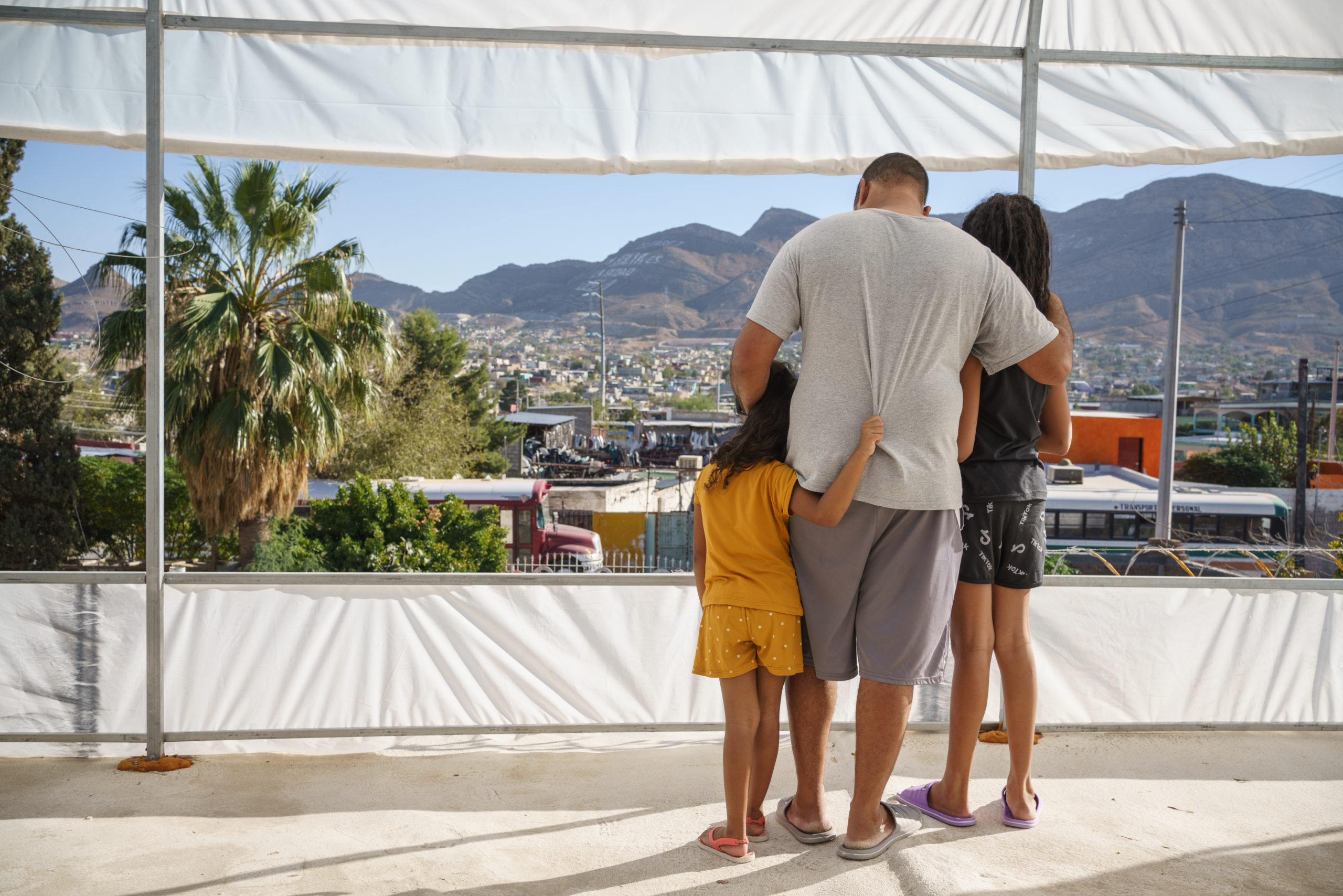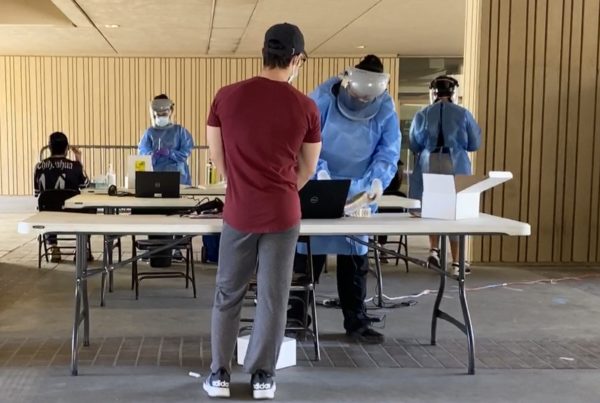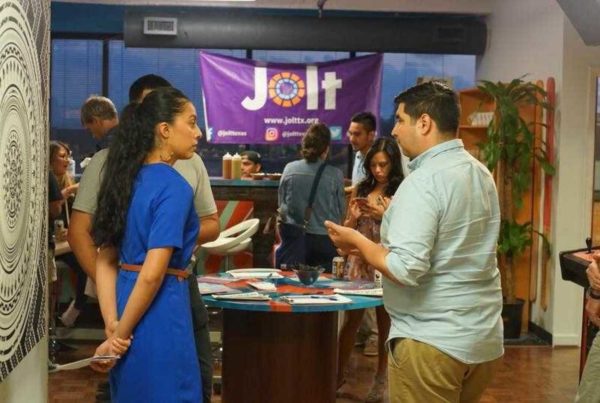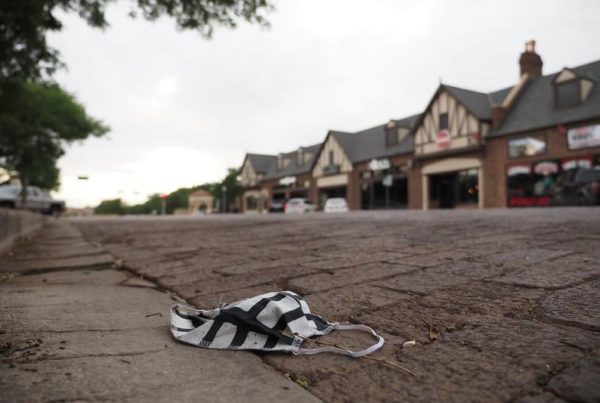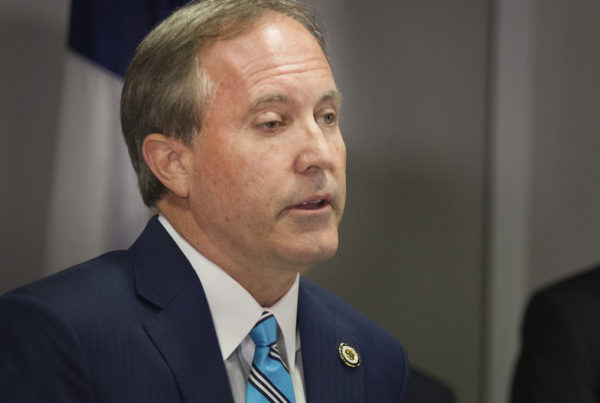This story is the fourth in a five-part series “The Asylum Trap: Stories From Migrants Forced To Wait In Mexico While Seeking Asylum.
When Carlo left Brazil with his two young daughters early this year, he thought they would get into the U.S.
His wife had been able to the year before. The federal government was sending some asylum seekers to wait out their cases in Mexico, under its “Remain in Mexico” policy, but they were from Spanish-speaking countries. Carlo speaks Portuguese.
But just a few weeks before he left, the Trump administration expanded the policy to include Brazilians. Even though he crossed the border in California, Carlo said, he was sent to El Paso — then back across the border, to Ciudad Juárez.
He and his daughters have been living in a crowded migrant shelter since February. They’re sweet girls, he said, but they’re struggling here. Especially his youngest, a 5-year-old with soft brown curls that hang down her back.
“She’s acting more like a baby now,” he said. “She’s gone back to wetting the bed and cries over everything. I think these behaviors — wetting the bed, having nightmares, waking up in the middle of the night crying — I think it’s all part of what we’re having to go through.”
His youngest is especially close with her mom. The girls constantly ask him when they’ll get to see her. They’re full of questions about the city where she lives. Does it snow there? Are there beaches?
He tries his best to answer them, but since COVID-19 hit, their future has become even more uncertain.
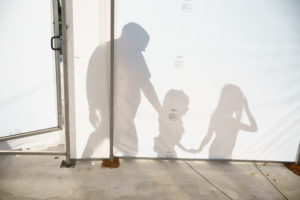
walking with his two daughters on Sept. 30, 2020 in Ciudad Juárez, Mexico. The family crossed the border in Mexicali, but were sent to Ciudad Juárez to await their asylum proceedings as part of the Migration Protection Protocols.
A dangerous situation
Even before the pandemic, advocates argued MPP violated peoples’ rights and put them in grave danger. In May, a human rights group found more than 1,000 reported cases of violence against migrants in MPP, including torture, rape and murder.
Carlo said he reached a breaking point in September, when he learned that his hearing had been rescheduled for a third time.
“Every time court’s delayed it’s a disaster,” he said. “It’s the worst day, because it’s like you’re never going to resolve your situation.”
But this time, he said, he completely fell apart. He started to consider what had once been unthinkable: sending his daughters across the border without him. It would be a last resort, he stressed, born of desperation.
“Because of the situation here in Mexico, seeing them suffering and suffering, that crazy idea goes through my head,” he said. “It’s the last thing you think of to try.”
He hoped his daughters could reunite with their mother, while he stayed behind in Juárez and waited out his asylum case.
Into the unknown…alone
Other families have already done this. In January, before the pandemic struck, CNN found at least 350 children had crossed the border by themselves after living in Mexico.
Unaccompanied children received special protections before the pandemic. The U.S. government could not immediately deport them or send them back into Mexico. They were typically placed in a youth shelter, then released to relatives or sponsors in the U.S. while they pursued their asylum cases.
But earlier this year, the U.S. government started rapidly expelling children, putting them on planes and sending them — alone — back to their home countries.
The Trump administration says it’s trying to prevent the spread of COVID-19, and has the authority to carry out these expulsions due to a public health order issued in March.
“What we’re trying to do, the best we can, is remove all individuals regardless of whether they’re children, minors or they’re adults,” said Mark Morgan, acting commissioner of Customs and Border Protection, at a press briefing in August.
“We’re trying to remove them as fast as we can to not put them in our congregate settings, to not put them in our system, to not have them remain in the United States for a long period of time, therefore increasing the exposure risk of everybody they come in contact with.”
Experts with the Centers for Disease Control and Prevention initially refused to issue the order, the AP recently reported, saying there was no evidence it would slow the coronavirus. The agency only reversed course when Vice President Mike Pence intervened.
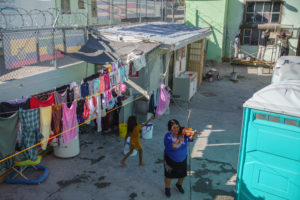
Carlo’s youngest daughter plays with the clothesline in the courtyard of the El Buen Samaritano Migrant Shelter as Marta Esquivel pretends to play a violin on Sept. 30, 2020 in Ciudad Juárez, Mexico. Esquivel has taken care of residents in the shelter since the 2018 immigration wave and throughout the pandemic.
An end to asylum
“The administration is bypassing the entire immigration system, the entire asylum system set up by Congress for children, and is using public health laws as a pretext to summarily remove children,” said Lee Gelernt, deputy director of ACLU’s Immigrants’ Rights Project. The group recently filed a class-action lawsuit challenging the rapid expulsion of children.
“The administration has been trying to close the border to people from Central America for four years now,” Gelernt said. “Now the administration, I believe, thinks they’ve found the silver bullet to end all of asylum, even for children, by claiming that it’s necessary from a COVID perspective.”
As the litigation plays out, advocates on the ground are trying to warn families of the risks inherent in sending their children across the border alone.
“One of the biggest things we’re trying to get across to people, just constantly, is how incredibly dangerous it is,” said immigration attorney Taylor Levy. She explains that children may not reach the U.S. safely and even if they do, “there’s a strong possibility that your kid might be sent back to Honduras, sent back to El Salvador alone.”
But families are desperate. Levy said she has heard stories about small children trying to kill themselves, and teenagers spending weeks in bed, struggling with depression.
Family separation 2.0
Levy has started calling MPP “Family Separation 2.0”: the government created a situation so dire, parents believe their best option is sending their children across the border without them, knowing they may never see each other again.
“I never thought anything could be worse than family separation,” Levy said. “But MPP is worse.”
She said families have even pleaded with her to take their children across the border herself, convinced that her status — as a white, U.S.-born lawyer — will offer protection.
“People will straight up tell me, ‘you’re white; can’t you take my 5-year-old across the border? Just take them and say, please Americans, please help them. They’ll understand,’” she said. “And to be begged to take someone’s child over and over and over again by so many different people has been truly shocking.”
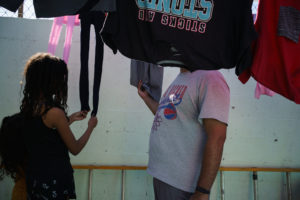
A Brazilian man and his two daughters check their laundry at Buen Samaritan Migrant Shelter on September 30, 2020 in Ciudad Ju‡rez, Mexico. The family crossed the border in Mexicali, but were sent to Ciudad Ju‡rez to await their Migrant Protection Protocols Court Process.
No good options
For his part, Carlo continues to waver. Sometimes he thinks it’s worth the risk, then second guesses himself.
If he knew someone could safely deliver his daughters to their mother, he would jump at the chance. They could be with her for Christmas, and to celebrate her birthday. Two milestones he doesn’t want them to pass at the shelter.
He’s tried to gently broach the subject with his daughters, but said they become fearful.
“They’re afraid of being without me,” he said. “So much that for my [younger] daughter to sleep through the night, she only sleeps when I’m beside her. If I go to the bathroom to bathe, she cries. I have to go back and lie with her. So it’s a thing that I haven’t really talked about with them, but I don’t think they would be on board.”
He said the only way he can imagine them getting on board is if he could reassure them that they would get to their mother quickly.
But he knows he can’t provide that reassurance.
Mallory Falk is a corps member with Report For America, a national service program that places journalists into local newsrooms. Got a tip? Email Mallory at Mfalk@kera.org. You can follow Mallory on Twitter @MalloryFalk.


